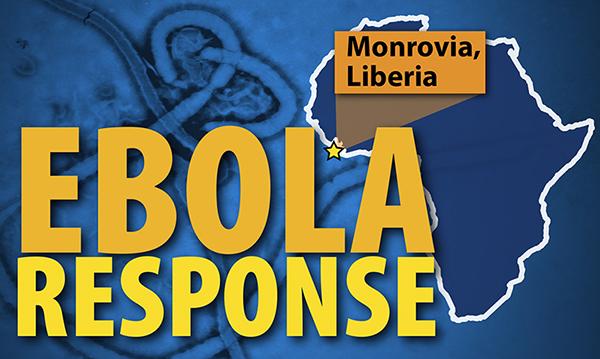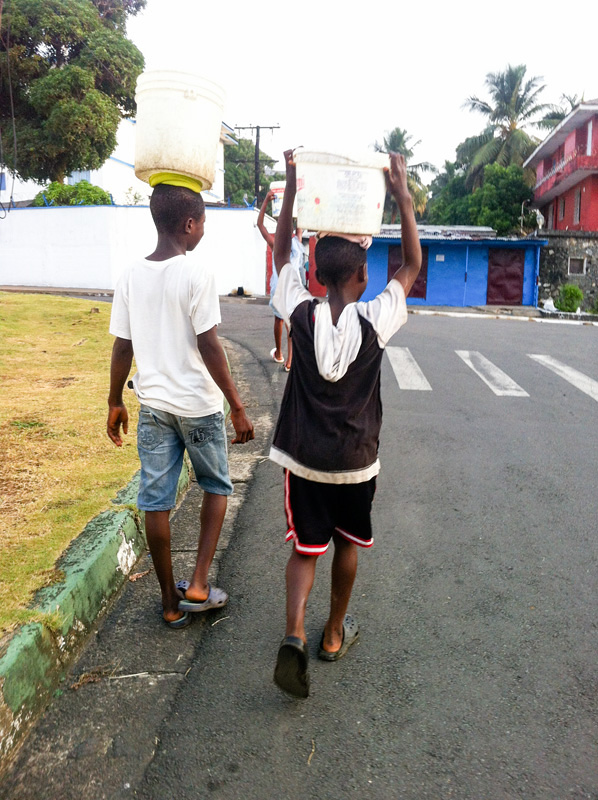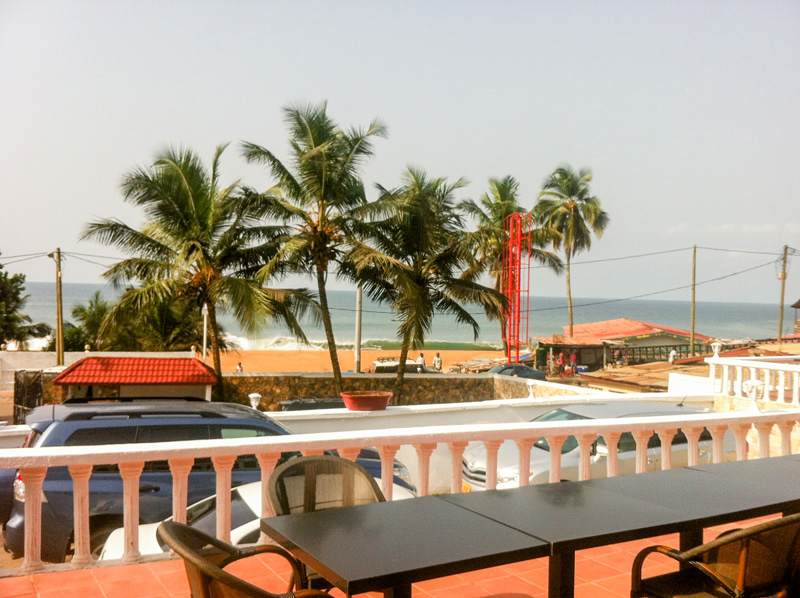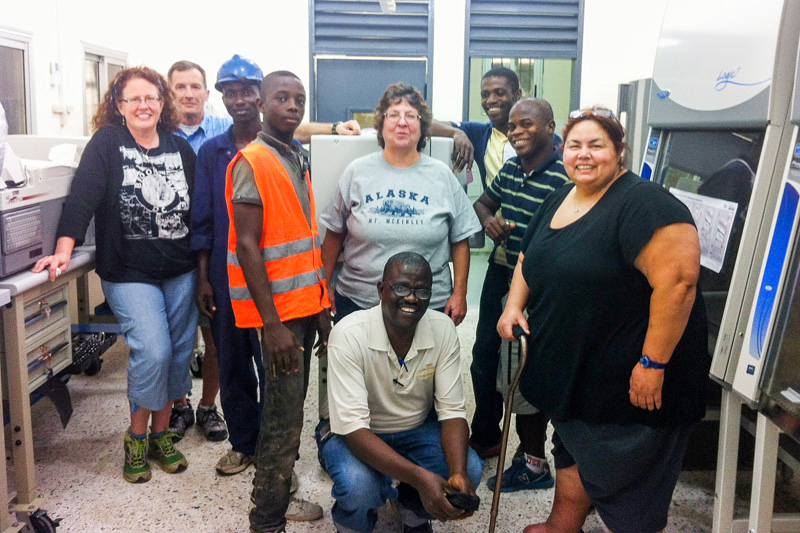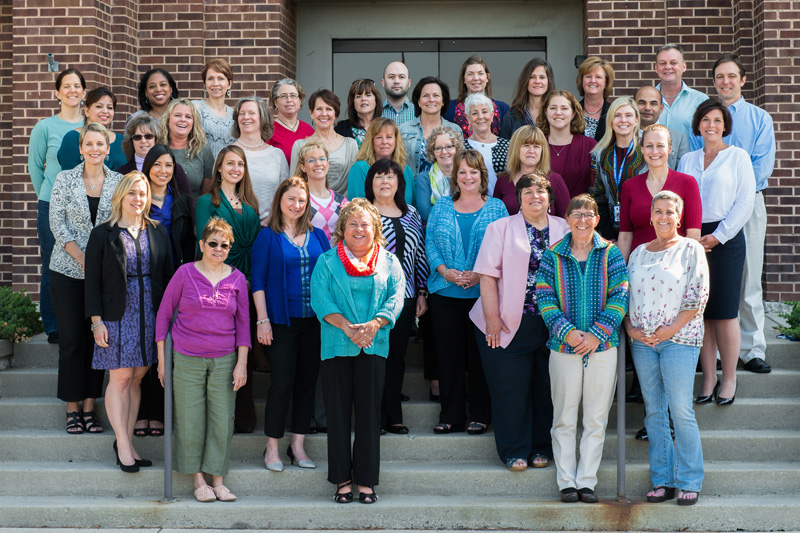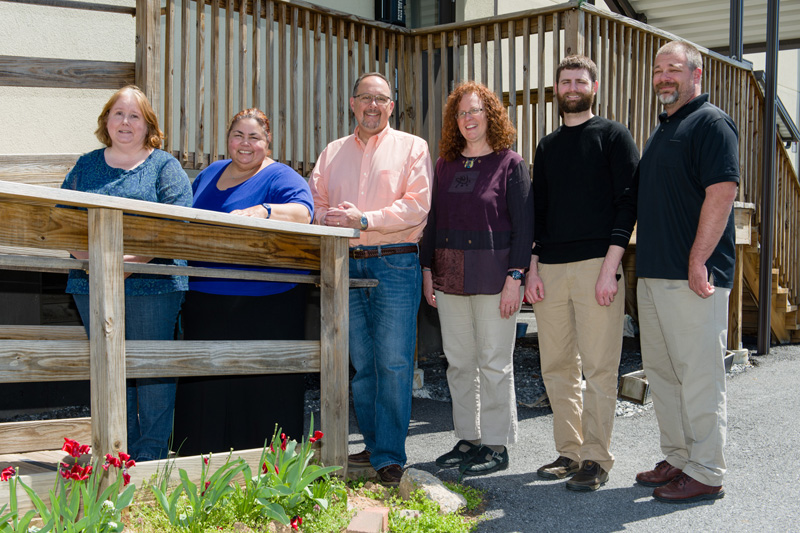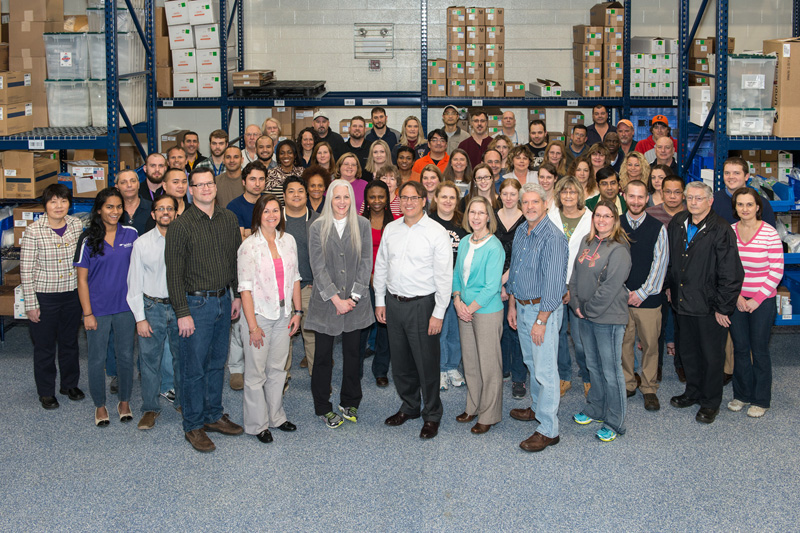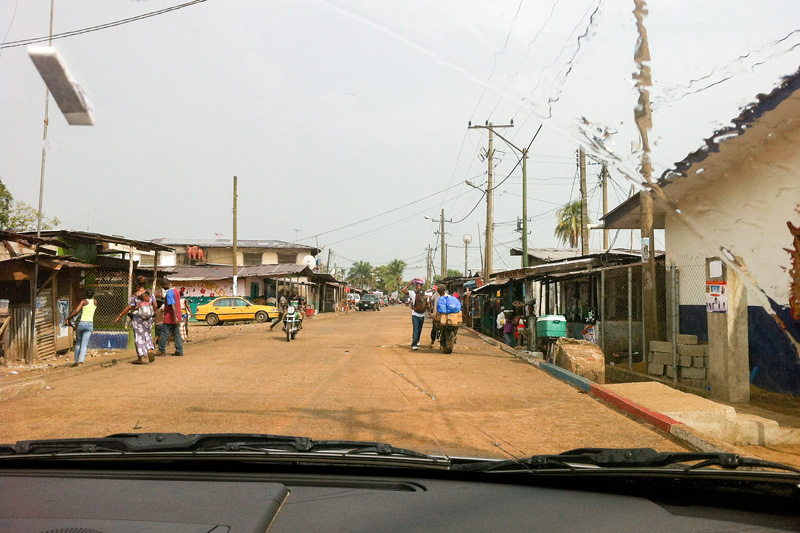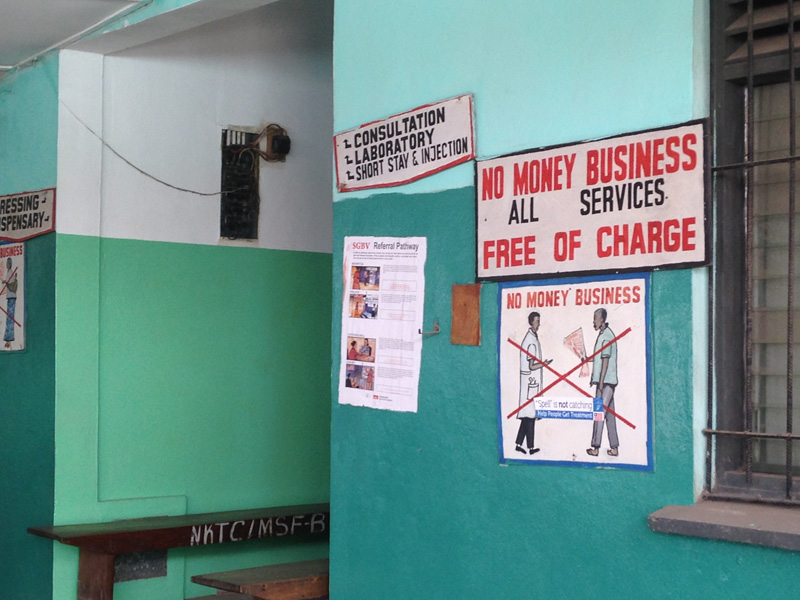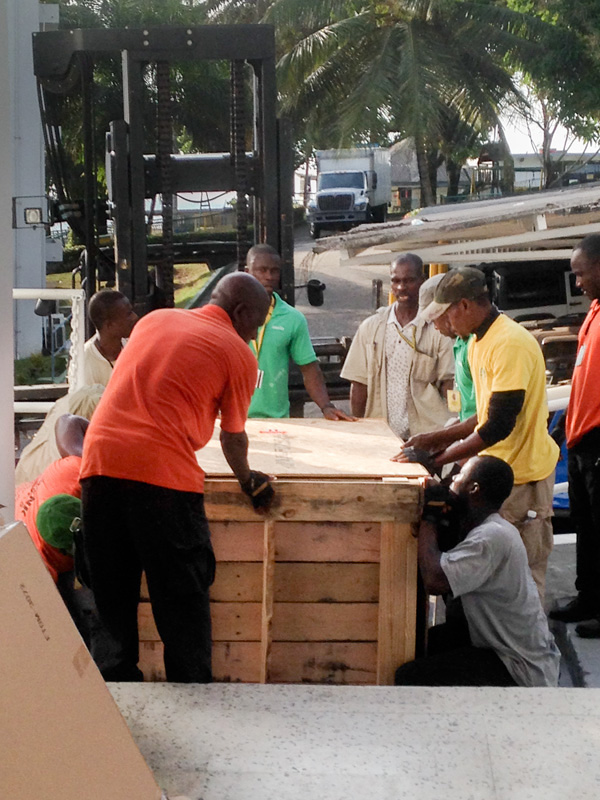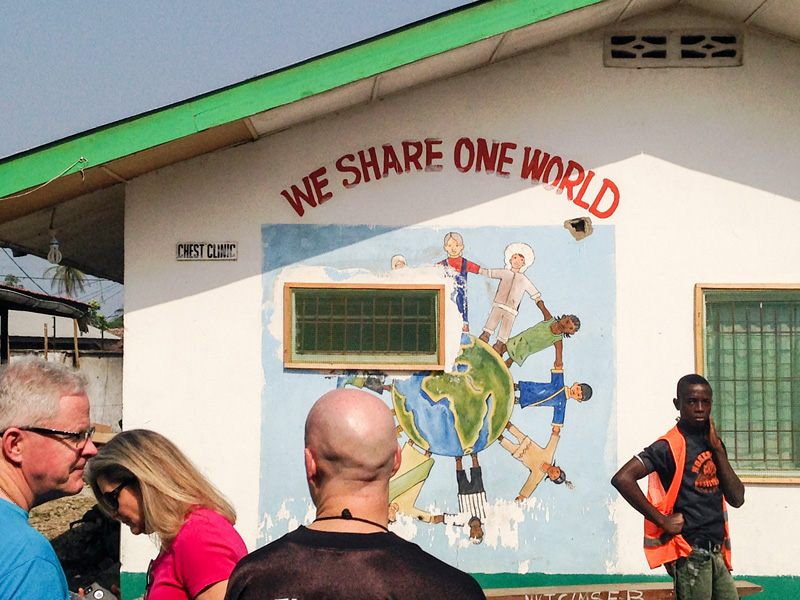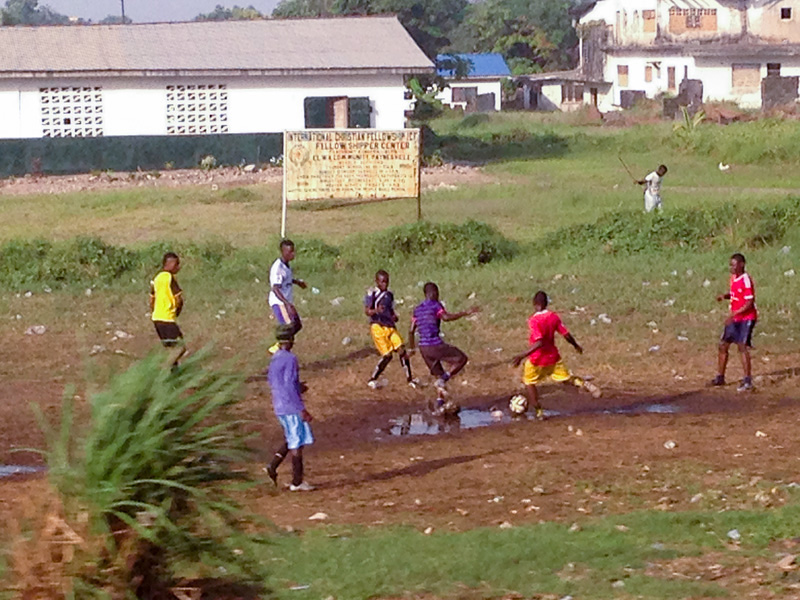Editor’s note: This article was adapted from the Employee Diversity Team’s display case exhibit “Recognizing the NCI at Frederick Ebola Response Team,” in the lobby of Building 549. The Poster staff recognizes that this article does not include everyone who was involved in the response to the Ebola crisis, both at NCI at Frederick and in Africa.
When the Ebola crisis broke out in 2014 in West Africa, staff members from the Frederick National Laboratory for Cancer Research responded quickly.
Members of the Clinical Monitoring Research Program (CMRP) were instrumental not only in setting up the clinical trials of the vaccine in Liberia, but also in providing training, community outreach, and recruitment strategies for the trials. Personnel from the Applied and Developmental Research Directorate (ADRD) established procedures for handling specimens and helped set up the clinical laboratory in Liberia. The staff of the Vaccine Clinical Materials Program (VCMP) manufactured and shipped thousands of vials of Ebola vaccine to the appropriate sites.
Clinical Monitoring Research Program: Providing Training, Community Outreach, and Recruitment Strategies
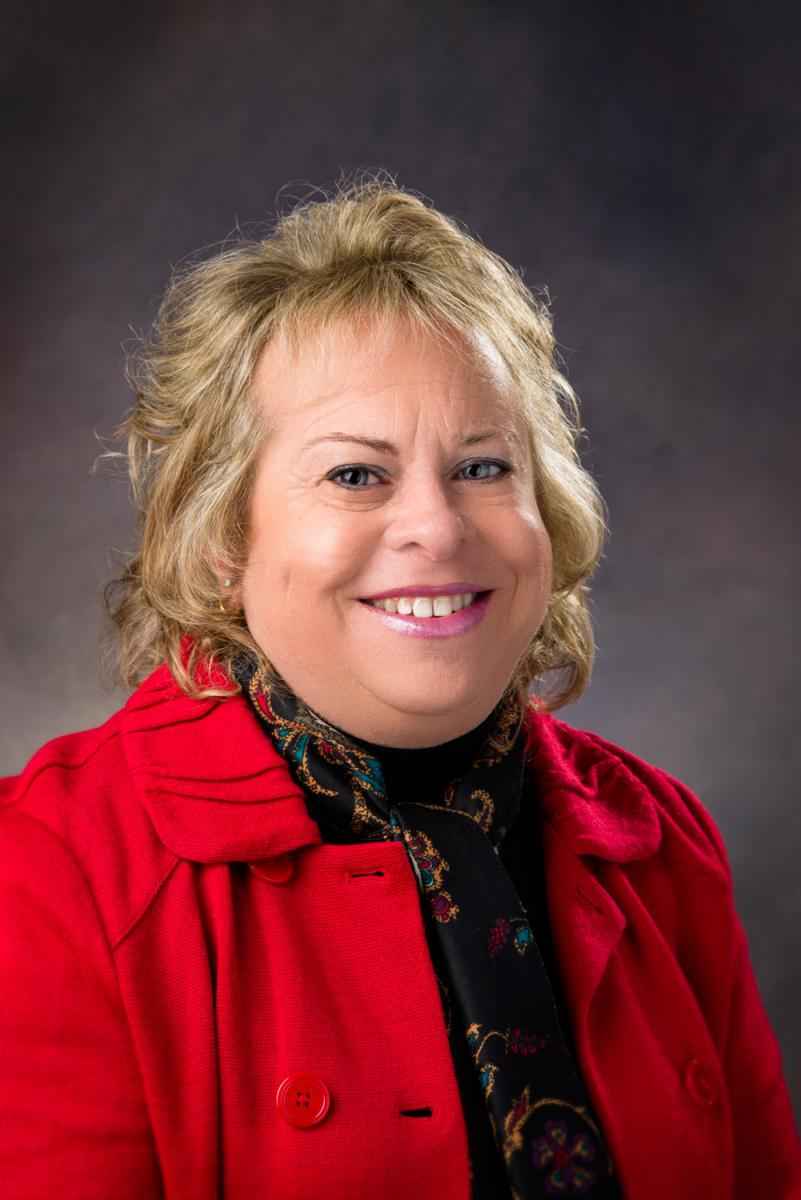
Beth Baseler, Director
What is your role at the Frederick National Laboratory for Cancer Research? I direct the CMRP, which provides high-quality clinical research support services in support of the mission of NCI, the National Institute of Allergy and Infectious Diseases (NIAID), and other institutes.
What type of general research does your group conduct on Ebola? CMRP supports research conducted by NIAID, which strives to understand, treat, and ultimately prevent the myriad of infectious, immunologic, and allergic diseases affecting the health of people around the world.
What type of support did your group provide during the 2014–2015 Ebola outbreak? In support of the Partnership for Research on Ebola Vaccines in Liberia (PREVAIL), CMRP staff members were part of a team that traveled to Liberia in October 2014 to gather information regarding the launch of Phase II/III clinical trials of two Ebola virus disease vaccines.
CMRP was involved in creating laboratory space by renovating two locations; designing innovative methodologies associated with patient recruitment and monthly follow-up for an anticipated 28,000 clinical trial participants; establishing a manual of operations; providing regulatory oversight and data safety and monitoring oversight; offering logistical support for shipping, meetings, and travel; awarding research subcontracts; determining efficient procurement mechanisms; providing on-site training; establishing pharmacy, laboratory, and repository operations; and providing overall project management.
Is there anything you would like to share about your experience in West Africa? Social mobilization plays an essential role in informing communities, learning from community leaders, and establishing a communication platform for the PREVAIL trial and the outbreak of Ebola. The gratitude and goodwill of the Liberian people towards those working on the project have been astounding. Everyone you meet is so thankful for the assistance and your presence.
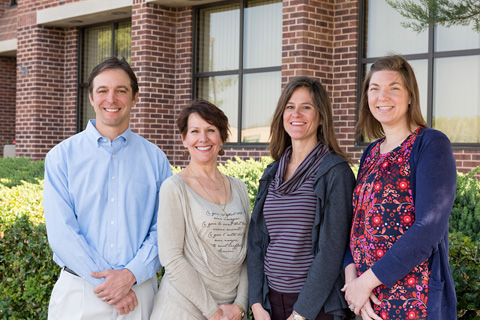
Sara Albert, Protocol Navigator
Albert (see photo on left, at right) prepared and submitted the PREVAIL study document to the NCI Institutional Review Board and corresponded with the lead in Liberia for the document’s submission to the National Research Ethics Board. She also assisted with subcontracting efforts related to data management, site operations and renovations, social mobilization, and in-country consultants.
“It takes an army to conduct research in a developing country, with the scope and magnitude that the Ebola studies have required,” Albert said. “The poverty in the county has been hard to see, but the kindness of the people has been incredible.”
Molly Buehn, Director, Regulatory Affairs
Buehn (see photo on left, middle left) leads the Regulatory Affairs Group, which prepared and submitted six Investigational New Drug (IND) applications to the U.S. Food and Drug Administration (FDA) to evaluate investigational Ebola vaccines and treatments. For the first time ever, the group also prepared and submitted three applications for approval by the African national regulatory authorities to conduct clinical trials in Liberia and Sierra Leone.
“The teamwork was incredible, with [all groups involved] communicating openly and working days, nights, and weekends to overcome any obstacle to get these important studies up and running,” Buehn said. “In most cases, these applications were written, submitted, and approved within days—an amazing accomplishment compared to the typical IND timeframe of four to more than six months.”
Theresa Engel, Clinical Project Manager II
Engel (not pictured) volunteered to travel to Liberia to support the project’s development on the ground. She assisted with creating budgets and subcontract documents, and provided critical guidance from her experience working on other international efforts.
“I think the thing that strikes me the most is that everyone is so happy and in a good mood all the time,” Engel said. “They have so little, but they do not let it define them or bring them down. Also, they are all genuinely appreciative of us being there to help them.”
Michael Galcik, Information Technology Manager
Galcik (see photo above, at left) provided expert guidance in establishing the necessary information technology infrastructure to support the efforts in Liberia.
Glacik noted that “devastation brought on by the civil war impacts so much of daily life, with no functional electrical grid, running water, basic sanitation, and similar things we take for granted. Add to it a devastating disease like Ebola … Yet I was amazed to see how resolute the people are to beat this. Positive attitudes were the norm, as were adaptations to daily life, such as establishing hand-washing stations at building entrances, frequent temperature checks, and replacing handshakes with elbow bumps.”
Shelly Simpson, Clinical Trials Director
Simpson (see photo above, middle right) directs the Clinical Trials Management team, which has been involved in training Liberian staff on International Conference on Harmonization/Good Clinical Practices and FDA regulations related to conducting IND studies. The team also created and implemented a quality assurance/quality control plan and conducted one audit to date for the PREVAIL study.
“The efforts made by all involved are astonishing. There is such a need to help these countries, and this group has been amazing in ensuring that the job can get done,” Simpson said.
Applied and Developmental Research Directorate: Establishing Procedures and Setting Up the Lab
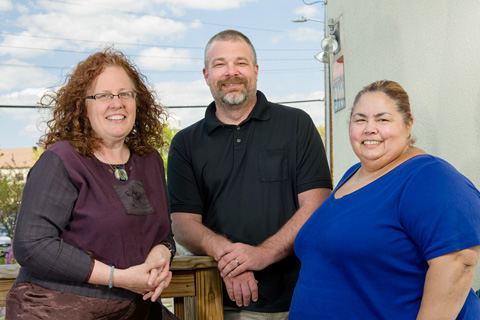
Helene Highbarger, Associate Scientist, Virus Isolation and Serology Laboratory
Highbarger (see photo on left, at left) helped set up the NIAID laboratory for the vaccine clinic in Monrovia, Liberia, where volunteers would be vaccinated with experimental vaccines and monitored as part of the PREVAIL study. She was also one of 20 people to receive the experimental chimp adenovirus vector Ebola vaccine in a September 2014 study that paved the way for the vaccine trial in Liberia.
“Everywhere people were carrying on their lives with aplomb in seemingly desolate conditions, and after a year of living with the fear and devastation of Ebola,” Highbarger noted. “When I think of challenges I have in my life, at home or at work, I think of Liberia and how much can be achieved with so little. I think of the can-do spirit of so many of the people I met. I think that was what I took away from my time in Liberia—personal proof of the indomitable human spirit.”
Adam Rupert, Functional Group Supervisor, AIDS Monitoring Laboratory
Rupert’s (see photo on left, middle) group is responsible for receiving, processing, and testing clinical specimens obtained in clinical trials sponsored by NIAID. As part of the Ebola response effort, Rupert gathered information about supplies and equipment needed for the operation of the Ebola vaccine clinic in Liberia. He spent two weeks in Liberia assisting in the setup and validation of the equipment in the lab as well as assisting in the training of the Liberian lab workers.
“It was a humbling experience to see how those people live compared to what we have here. I would also say that I am quite amazed that we were able to get a laboratory functioning, given the surroundings, and I am proud to have been a part of it,” Rupert said.
Refika Turnier, Flow Cytometry Section, Clinical Support Laboratory
Within three weeks of responding to a call for volunteers from the NIH community, Turnier (see photo above, at right) was on a plane to Liberia to help fight what she calls “this epidemiological nightmare.” She assisted with the setup of the laboratory at Redemption Hospital, where the clinical trials were conducted.
“I was especially impressed with the [Liberian] students and young health professionals who brought equal doses of gravity and enthusiasm, in addition to the utmost professionalism and courage, to the task,” Turnier said. “The project also owes a huge salute to the skill, dedication, and energy of all the other individuals who gave their energy and sweat to the effort, from the construction workers, electricians, carpenters, drivers, all the way down to the young apprentice, known to all as Baby Boy.”
Vaccine Clinical Materials Program: Manufacturing and Shipping the Ebola Vaccine
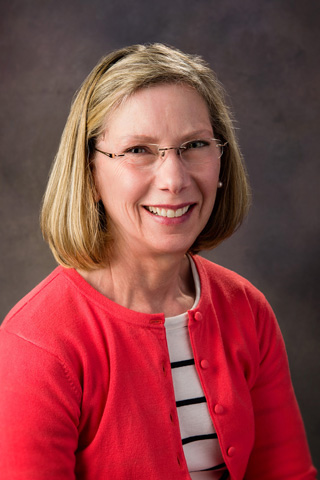
Barbara Brooks, Director of Manufacturing Operations
What is your role at the Frederick National Laboratory for Cancer Research? I currently oversee the manufacturing line staff; warehouse and materials management; and the clean room and facility sanitation staff.
What kind of work does your group do that is related to Ebola in general? The Pilot Plant is a VCMP manufacturing facility that produces clinical trial supplies in support of research and development conducted at the Vaccine Research Center of NIAID.
In June 2014, before the outbreak was announced, the Pilot Plant manufacturing staff was directed to produce the first bivalent chimpanzee adenovector (cAd3) vaccine formulated from two bulk drug substance lots, each manufactured from an Ebola strain isolated in different regions of Africa: Zaire and Sudan.
The filled drug product vials were manufactured at the Pilot Plant as well as tested, quality assurance (QA) released, and shipped to the trials by on-site staff. The Pilot Plant regulatory affairs and QA staff drafted the Chemistry, Manufacturing, and Controls section for the IND submission to the FDA for approval to use the vaccine in clinical trials.
What type of support did your group provide during the 2014–2015 Ebola outbreak? We continued manufacturing more vaccine in August, producing a second lot of a monovalent version of the vaccine that was distributed to trials in the U.S., U.K., Africa, and Switzerland.
In September 2014, a Yellow Task was approved to produce clinical materials in collaboration with the biopharmaceutical company GlaxoSmithKline (GSK). The VCMP filling group formulated and filled three additional lots of monovalent vaccine for this agreement, and the VCMP Materials Management staff ensured that the vaccine cleared international customs and arrived safely in Belgium for delivery to GSK for the clinical trials. The VCMP produced 6,803 vials of Ebola vaccine, in addition to 5,885 vials of diluent, to support ongoing Ebola clinical trials.
Is there anything you would like to share about your group’s support to the Ebola crisis response? During the Ebola project, one shipment of vaccine was needed immediately for a clinical trial in the U.K., in which participants were already enrolled and waiting. To expedite customs clearance and safe delivery to the clinical site, the VCMP Materials Management staff arranged for a U.S. escort to accompany the material throughout travel, and a courier service to deliver the vaccine directly to the site.
 Patti Labbe, Associate Director, Quality Control Laboratory
Patti Labbe, Associate Director, Quality Control Laboratory
What is your role at the Frederick National Laboratory for Cancer Research? I oversee the quality control testing of all raw materials; in-process manufacturing samples; final release testing for cell banks, drug substances, and drug products; microbiology samples, including environmental monitoring and utility sampling; and stability of drug substance and drug product.
What kind of work does your group do that is related to Ebola in general? Quality Control (QC) oversees the testing of the final drug product to ensure its safety, potency, quality, and efficacy, while abiding by the FDA regulations under 21CFR210 and 211 (which govern good manufacturing practices for drugs and finished pharmaceuticals).
What type of support did your group provide during the 2014–2015 Ebola outbreak? Prior to the 2014–2015 Ebola outbreak, QC supported the development of a test method to determine particle unit concentration of the vaccine. This method was used to test the cAd3 Ebola drug substance and drug product to support clinical trials. The data collected were used to support the dosing of the patients enrolled in the clinical trial. The Ebola vaccine was licensed to the biopharmaceutical company GSK, and I assisted with the transfer of testing information to GSK, in addition to providing continued support for testing the drug product for GSK to support expanded clinical trials in the U.K., Switzerland, and Africa.
Is there anything you would like to share about your group’s support to the Ebola crisis response? It was fortunate that the vaccine candidate was as advanced as it was to support the Ebola crisis in Africa. There were many people at the VCMP who were involved in release of the drug product and subsequent international shipments to support the ongoing trials.
 Pat Marshall, Director, Quality Assurance/Regulatory Affairs
Pat Marshall, Director, Quality Assurance/Regulatory Affairs
What is your role at the Frederick National Laboratory for Cancer Research? I developed a quality system–based plan for the VCMP that integrates current good manufacturing practice regulations with internal processes for manufacturing and product testing operations. I currently oversee compliance, lot release, document control, computer systems, equipment validation and calibration, and regulatory affairs.
What kind of work does your group do that is related to Ebola in general? QA is involved in the complete life cycle of the product. We performed on-site audits of both contract manufacturing organizations, Advent in Pomezia, Italy, and IDT in Dessau, Germany.
Advent manufactured the cAd3 Ebola Z/S drug substance lots that were subsequently used in the Ebola vaccine formulated at the Pilot Plant for clinical trials. QA monitored the progress of the manufacturing; reviewed the production batch and test records; and released the drug substance for shipment to the Pilot Plant for filling. During the filling operation, QA performed on-the-floor monitoring of filling operations, and reviewed the production batch and test records to release the material for clinical use.
IDT manufactured the MVA Ebola Z drug substance and drug product at its Dessau facility. QA reviewed the production batch and test records for release of the drug product for clinical use.
Regulatory Affairs (RA) drafted the Chemistry, Manufacturing, and Controls sections for the cAd3 Ebola Z/S and the MVA Ebola Z IND applications. RA continues to support NIAID in responding to the FDA’s request for information.
Is there anything you would like to share about your group’s support to the Ebola crisis response? QA, with support from Facilities, Maintenance, and Engineering staff, QC, and Manufacturing, hosted an on-site audit by GSK’s lead third-party auditor to qualify the Pilot Plant to fill GSK’s drug product lots. Due to the urgency, the VCMP had two weeks to prepare for the audit. The audit was successful and qualified the Pilot Plant to move forward with scheduling the fills. To meet GSK’s clinical timelines, everyone pulled together to complete, in approximately four weeks, a process that typically takes nine to ten weeks from fill to QA release.
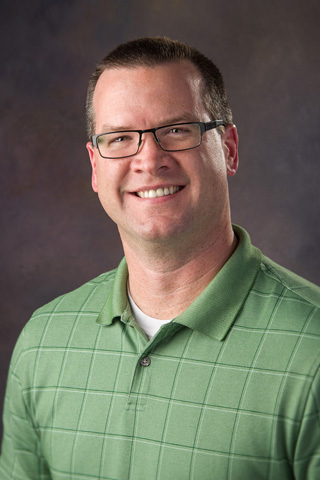 Matthew Westerman, Associate Director of Manufacturing
Matthew Westerman, Associate Director of Manufacturing
What is your role at the Frederick National Laboratory for Cancer Research? I manage the production of bulk vaccine drug substances and products at the Pilot Plant by coordinating the activities of five manufacturing areas that include buffer preparation, inoculum preparation, fermentation, purification, and fill/finish.
What kind of work does your group do that is related to Ebola in general? The Pilot Plant produces Phase I clinical materials to support the initiatives of NIAID’s Vaccine Research Center and Vaccine Production Program. We are a contract manufacturing organization that supports the goals and objectives of the Vaccine Production Program. The VCMP works in collaboration with the Vaccine Production Program to transfer manufacturing methodologies to the Pilot Plant to produce Phase I clinical vaccine products.
What type of support did your group provide during the 2014–2015 Ebola outbreak? During the 2014–2015 Ebola outbreak, our fill/finish operation produced five clinical lots to support clinical trials in the U.S., Europe, and Africa. The filled products were chimpanzee adenovirus vaccines. The first two lots, produced in the summer of 2014, were bivalent and monovalent vaccines targeting Ebola Zaire and Ebola Sudan. The remaining three lots, produced in the fall of 2014, were monovalent vaccines targeting Ebola Zaire only and supported industry and NIH initiatives to respond to the Ebola outbreak. In all, VCMP filled 6,803 vials in the five lots.
Is there anything you would like to share about your group’s support to the Ebola crisis response? The VCMP administration, QC, QA, and Manufacturing groups were committed, and went above and beyond to ensure the vaccines made it to the clinical trials as quickly as possible, in attempts to stop this horrible disease. Seeing the project through to successful completion was a huge undertaking and a great collaborative effort between industry, the NIAID Vaccine Production Program, and the VCMP.


